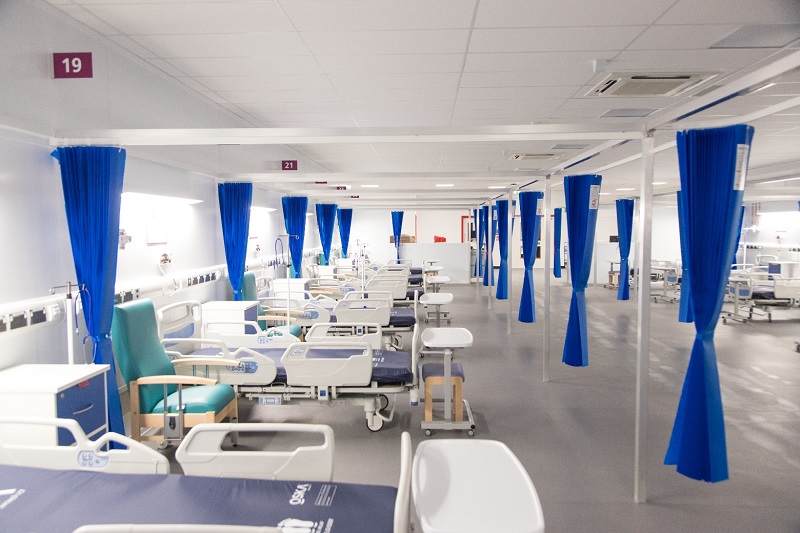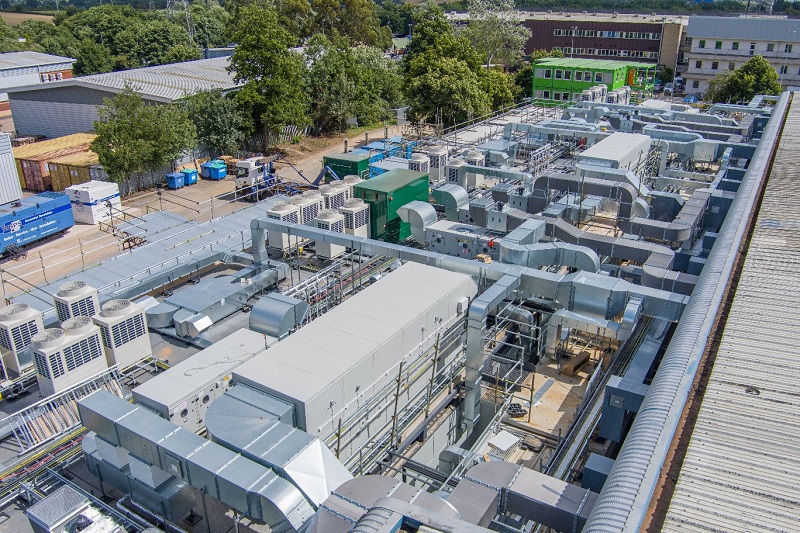Demand for hospital treatment continues to outstrip capacity, with the latest figures showing that over 6.48 million people are still waiting for treatment as a result of the COVID-19 backlog.
So, when given the go-ahead to start work on new hospital projects, or community-based facilities, there is no question that the companies involved must ensure they are erected as efficiently as possible.
What must not be forgotten, however, is that these buildings must also be built with flexibility in mind to ensure they can be adapted to meet the needs of the NHS and local communities into the future.
To ensure this happens, we must learn from those hospitals that were built as part of the national response to COVID-19.
Of these, the NHS Exeter Nightingale Hospital is a best-use case study, as the only Nightingale hospital which has proved its versatility and is still being used by the NHS today.
Repurposing health facilities sustainably
“The true success of the Exeter Nightingale Hospital is marked by its continued use beyond the initial pandemic response,” explains Andrew Rolf, project director at Arup, which worked on the emergency hospital.
“Working with BAM Construction, the design team, which included Arup, repurposed a disused retail store into an acute medical facility able to cope with an influx of COVID-19 patients in under 60 days.
“Two years on, we have repurposed the building again into a Community Diagnostic Centre (CDC), elective care surgical centre, and outpatient department facility to help tackle waiting list backlogs.”
To achieve this, a number of single-storey modular buildings were connected to the existing retail unit. As well as more than doubling the size of the building, these off-the-shelf modules were designed to be unbolted and re-used elsewhere when needs change; providing future flexibility.
This extended facility provided a range of services, such as the pharmacy, staff welfare, catering, utility rooms, patient transfer rooms, and modular imaging and theatre spaces.
“This sort of adaptable thinking will be critical as more hospitals are built to deal with the NHS backlog, ensuring they offer vital services quickly and effectively; yet planning for the future potential relocation of services as needs change,” said Rolf.

The centre has recently been repurposed to provide a community diagnostic centre
Efficient project delivery
Both projects were extremely time pressured.
The initial 116-bed COVID hospital was designed and built in just 57 days, while the second required a one-month turnaround.
And both projects saw supply chain constraints, and the initial project had the added challenge of COVID-19 social distancing and biosecurity measures.
“A modern methods of construction (MMC) approach was essential to meet the programme, while maintaining quality,” said Rolf.
“The reconfigured Nightingale Hospital extended the original footprint by over 50%, using modular operating theatres, imaging suites, and support accommodation which came pre-built and pre-finished to install on site; located onto demountable steelwork construction.
“The materials used had to respond to the supply chain constraints, speed of construction, and available labour. For example, timber widely became the material of choice because it was adaptable on site and was also in plentiful supply.”
Similarly, the project could not have happened without embracing the power of digital technology.
This included virtual site visits, drone surveys, and Metaport 3D scans.
“By necessity, the ‘normally done thing’ was ignored and other solutions were found,” said Rolf.
“The constraints of the Exeter Nightingale Hospital project meant the team had no choice but to think outside of the box to deliver the facility, breaking traditional boundaries.
“Collaboration was central to the Nightingale approach.
“The team worked closely with the supply chain partners, delivering a just-in-time design approach working on the most-efficient flow of information to streamline the design-to-construction processes.
“The repurposing of the original Exeter Nightingale Hospital shows this approach was not a one-off used in the pandemic and that there is scope to do same thing again.”

The building was a disused retail store and was created in just 60 days at the height of the pandemic
Looking ahead
He added: “As the country and the NHS await the development of new healthcare facilities, the NHS Exeter Nightingale Hospital serves as a best practice case study of how we can repurpose existing facilities.
“We know that it is possible to create buildings that meet current demand while futureproofing them against changing needs at the same time.
“Just as importantly, we understand the ways of working necessary to make this happen.
“We must focus on collaboration, open-mindedness, and a passion to deliver the safest and most-sustainable facilities to serve our communities going forward.
